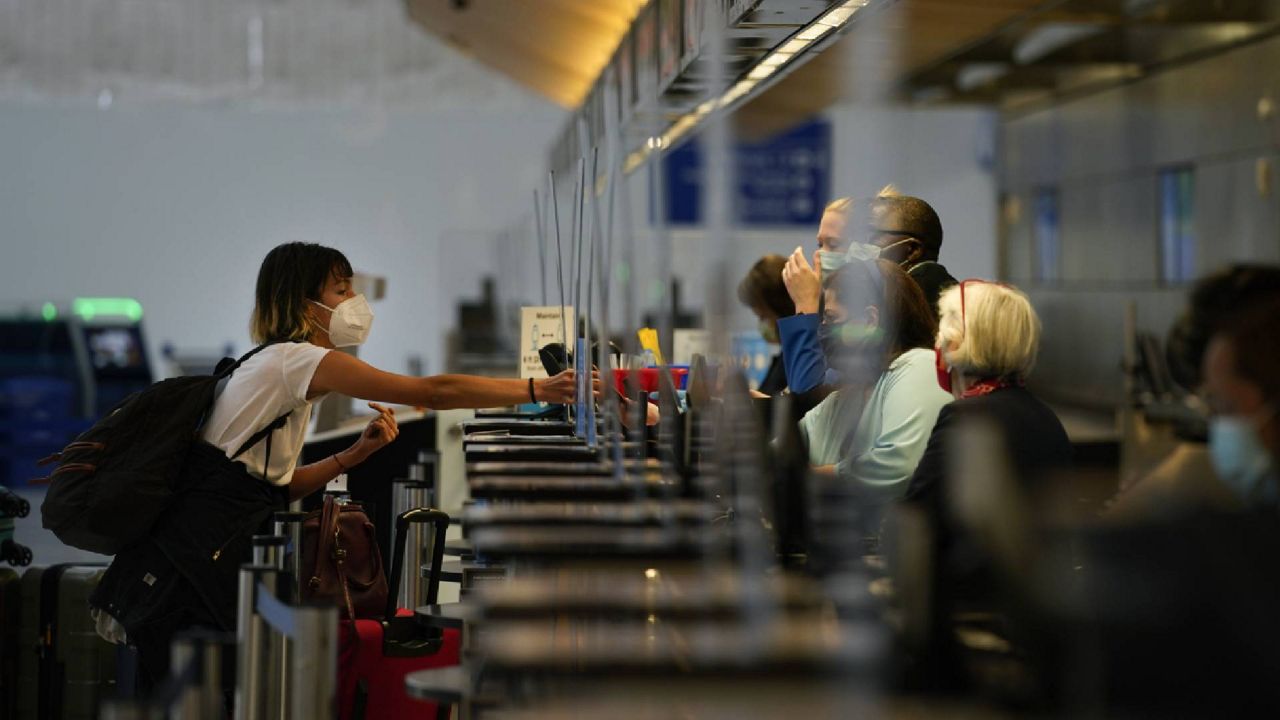With just days to go before Americans celebrate Thanksgiving, doctors and experts are warning that many of this year’s gatherings may classify as “high risk” of spreading COVID-19, something that can be deadly for those prone to developing a severe case of the virus, such as older family members.
“It’s a high risk event,” said Dr. Liz Goldberg, an emergency physician and researcher with Brown University. “The best way to show your love and you care for someone right now is to make sure that they stay healthy. That includes not seeing them, not hugging them and not putting them at risk during Thanksgiving,”
Dr. Goldberg co-developed the My COVID Risk App, a tool that people can use to evaluate how risky a certain situation might be amid the pandemic, like spending time with six people outdoors in California versus an indoor gathering of ten family members in South Carolina, for example.
“You're not going to forget if you pass on COVID to your loved one. That's something that you can’t rewind,” she added.
The app evaluates multiple factors, which Dr. Goldberg discussed with Spectrum News.
The CDC has advised it’s more risky to celebrate indoors, especially in a poorly-ventilated space, since the virus is mostly spread through airborne droplets. If celebrating indoors, experts recommend opening doors and windows.
“Ideally, you would do an outdoor gathering with a few people wearing masks,” Dr. Goldberg said. “We know that’s hard to do, and that’s why it might be easier for some people just to stay home.”
The CDC has also recommended people avoid Thanksgiving travel, but millions of Americans passed through airports in the days following that advice.
If you are gathering, you can continue to take public health measures to prevent spreading the virus, including wearing a mask around loved ones as well as quarantining and getting tested beforehand, Dr. Goldberg said.
If you are around family members outside your immediate household, you can also avoid close interactions like hugging and sharing utensils.
“We also know that people tend to share food at Thanksgiving,” Dr. Goldberg said. “We know that you can get COVID through contact. And so, if you can bring your own food that only you and your household eat and avoid sharing utensils and food items, that will also reduce your risk.”
Numerous experts have recommended keeping your Thanksgiving gathering as small as possible this year, ideally limited to the members of your immediate household.
“Once you bring someone in from outside your household, either friends or family, it’s much more difficult to understand what that person’s risk was in the 14 days leading up to that,” Dr. Goldberg said.
Dr. Goldberg highlighted the “creative” ways now available to connect with family and friends using technology, especially older relatives, something Dr. Anthony Fauci said he himself would be using this Thanksgiving in an interview with Spectrum News.
“I'm doing that with my own family in the sense of bringing in my adult daughters who live in various parts of the country. They do not want to come home,” Dr. Fauci explained. “They would love to be with me and I would love to be with them. But they're very sensitive about my age [and] that I'm in a vulnerable group.
In general, it’s wise to evaluate which parts of the country are seeing the most dramatic surge in cases and to avoid travel in and out of those areas. However, nearly every state has seen an increase in cases in the last few weeks, making any kind of travel a risk.
“It doesn’t matter where you’re coming from,” Dr. Goldberg said. “Your chances of having high rates of COVID in your community are high, and that increases the risk of attending these events.”
Overall, experts say the safest option is sticking to those in your immediate household, celebrating virtually with a larger group and opting for other Thanksgiving activities, such as delivering food to nearby friends and family instead.



